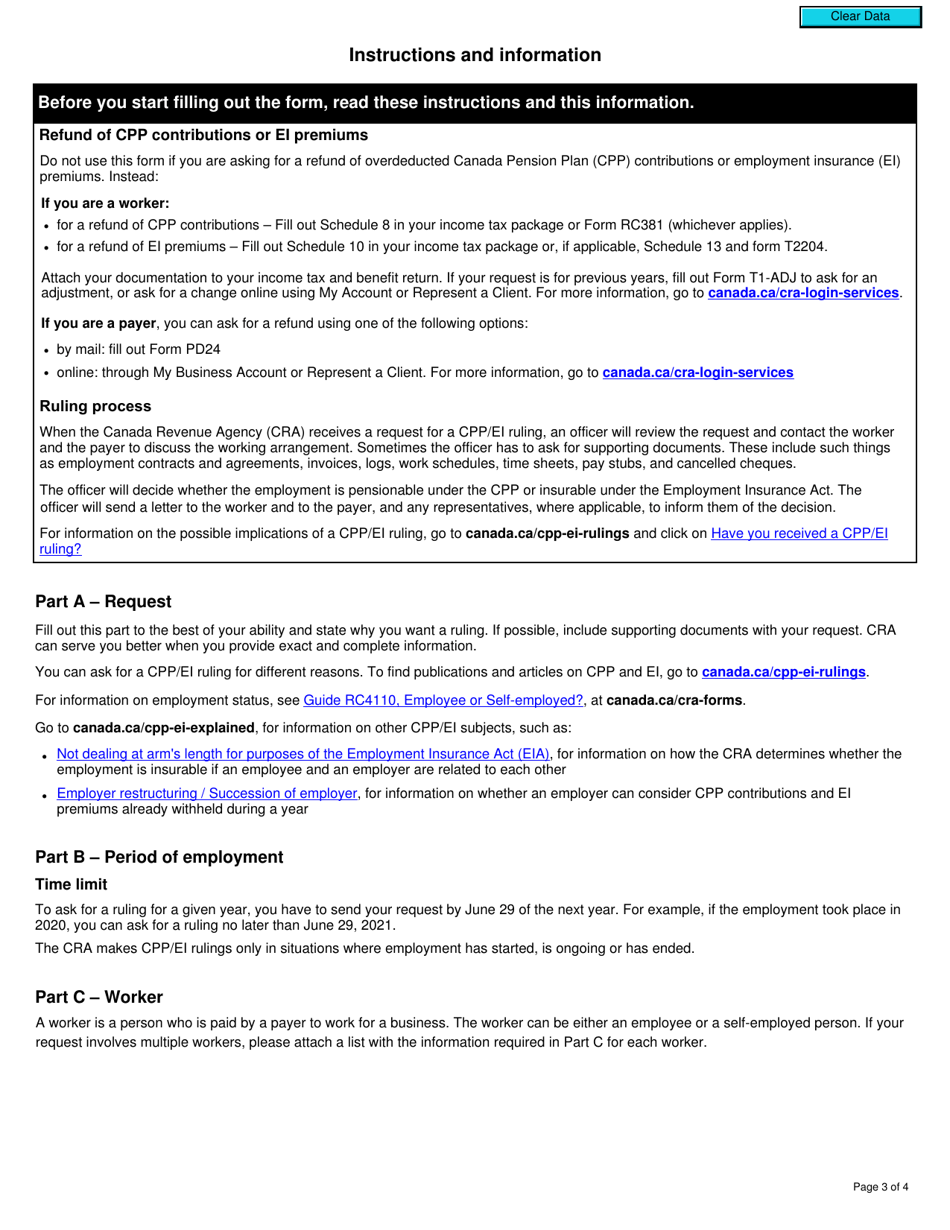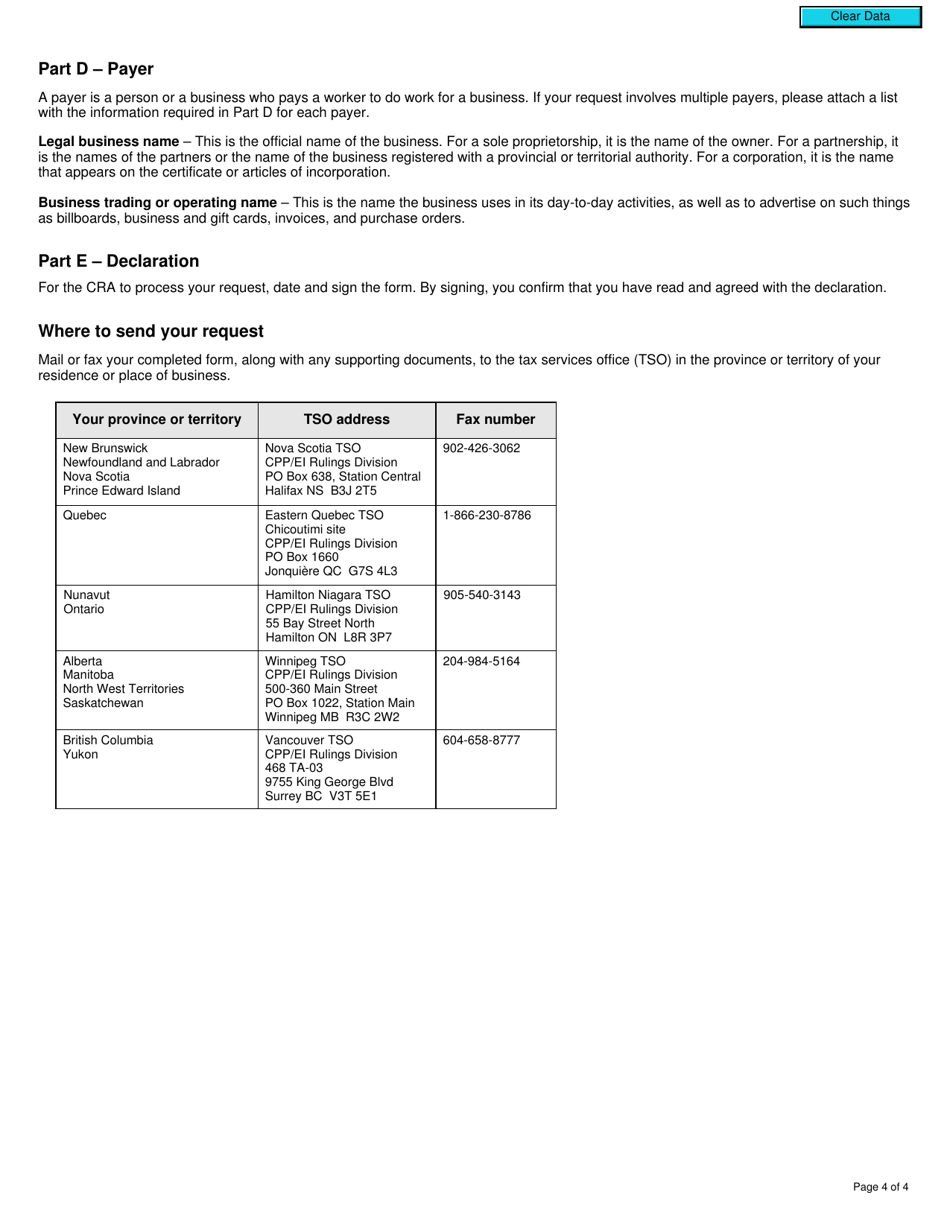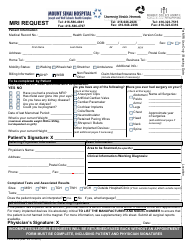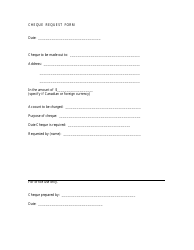This version of the form is not currently in use and is provided for reference only. Download this version of
Form CPT1
for the current year.
Form CPT1 Request for a Cpp / Ei Ruling - Employee or Self-employed? - Canada
Form CPT1, Request for a CPP/EI Ruling - Employee or Self-employed, is used in Canada to request a ruling from the Canada Revenue Agency (CRA) to determine whether a worker should be considered an employee or self-employed for the purposes of the Canada Pension Plan (CPP) and Employment Insurance (EI) programs. The form helps determine the proper classification of workers and their eligibility for CPP and EI benefits.
The Form CPT1 for a Cpp/Ei Ruling in Canada is typically filed by self-employed individuals.
FAQ
Q: What is Form CPT1?
A: Form CPT1 is a request form to determine if an individual should be classified as an employee or self-employed in Canada.
Q: What is a Cpp/Ei Ruling?
A: Cpp/Ei Ruling refers to the ruling on Canada Pension Plan (CPP) and Employment Insurance (EI) contributions and benefits.
Q: What is the purpose of Form CPT1?
A: The purpose of Form CPT1 is to seek clarification on whether an individual should be considered an employee or self-employed for CPP and EI purposes.
Q: Why is it important to determine employee or self-employed status?
A: It is important to determine employee or self-employed status for the correct deduction and remittance of CPP and EI contributions.
Q: Who should fill out Form CPT1?
A: Form CPT1 should be filled out by individuals or their authorized representatives who want to seek a CPP/EI ruling on their employment status.
Q: What information is required on Form CPT1?
A: Form CPT1 requires details about the individual's employment arrangement, nature of work, relationship with employers, and other relevant information.
Q: What happens after submitting Form CPT1?
A: After submitting Form CPT1, the CRA will review the information provided and make a ruling on the individual's employment status for CPP and EI purposes.
Q: Is the ruling provided by the CRA binding?
A: Yes, the ruling provided by the CRA is binding, but it can be appealed if the individual disagrees with the decision.
Q: What should I do if my employment status changes?
A: If your employment status changes after receiving a ruling, you should notify the CRA and provide updated information.










